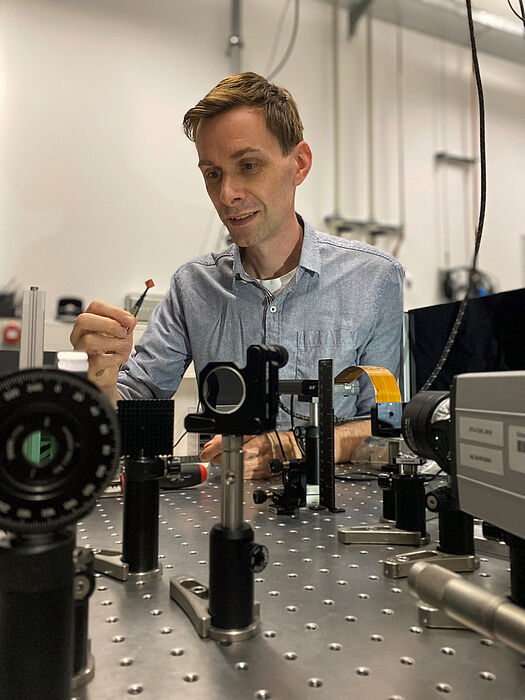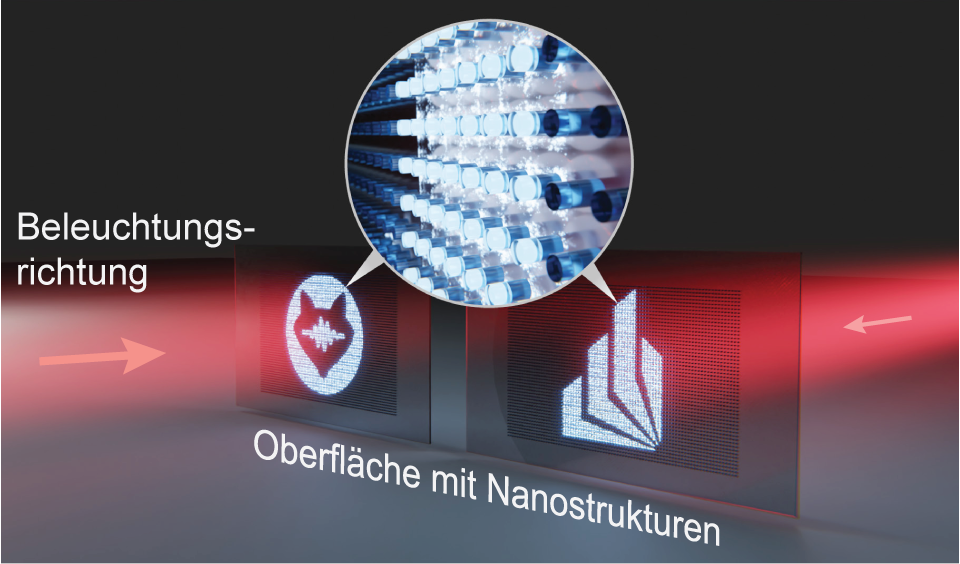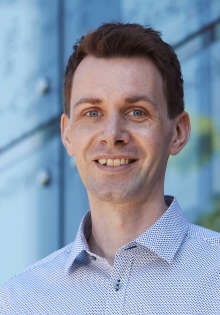Quantum computers are one of the central future technologies of the 21st century. In cooperation with colleagues from the Australian National University and the Singapore University of Technology and Design, researchers at Paderborn University led by Prof. Dr. Thomas Zentgraf have now developed a new technology for manipulating light that can serve as the basis for future optical quantum computers. The results have now been published in the internationally renowned journal Nature Photonics.
New optical elements for manipulating light enable more advanced applications in modern information technology, especially in quantum computers. However, a major challenge remains the so-called non-reciprocal light propagation through such elements. Prof. Dr. Thomas Zentgraf, head of the ultrafast nanophotonics group at Paderborn University, explains, "While in reciprocal propagation light can travel the same path forward as backward through a structure, non-reciprocal light propagation is comparable to a one-way street in which it can only propagate in one direction." Non-reciprocity is a special property in optics that causes light to produce different material properties when its direction is reversed. An example would be a window made of glass that is transparent from one side and allows the light to pass through, but when viewed from the other side it acts like a mirror and reflects the light. This is referred to as a duality. "In the field of photonics, such duality can be very helpful in designing novel optical elements for manipulating light," Zentgraf said.
In a recent collaboration between his research group at Paderborn University and researchers at the Australian National University and the Singapore University of Technology and Design, such non-reciprocal light propagation was combined with frequency conversion, i.e., changing the wavelength (color) of laser light. "We used frequency conversion on the specially designed structures with sizes in the range of a few hundred nanometers to convert infrared light, which is invisible to the human eye, into visible light," explains Dr. Kruk, a Marie Curie Fellow in Zentgraf's group. The experiments show that this conversion process occurs only for one direction of illumination of the nanostructured surface, while it was fully suppressed for the opposite direction of illumination. This type of duality in the properties for frequency conversion was used to co-direct images into an otherwise transparent surface. "We designed the arrangement of the different nanostructures to give a different image when the sample surface was illuminated from either the front or the back," Zentgraf says, adding, "These images only became visible when we used infrared laser light for illumination."
In their initial experiments, the intensity of the frequency-converted light in the visible was still very low. The next step, therefore, is to further increase the efficiency so that less infrared light is needed for frequency conversion. In future optical-integrated circuits, the directional control of frequency conversion could be used to switch light directly with other light or to create specific photon states for quantum optical computations directly on a small chip. "We may see an application in future optical quantum computers, where directional generation of single photons by frequency conversion plays an important role," Zentgraf says.
Go to article: https://doi.org/10.1038/s41566-022-01018-7



